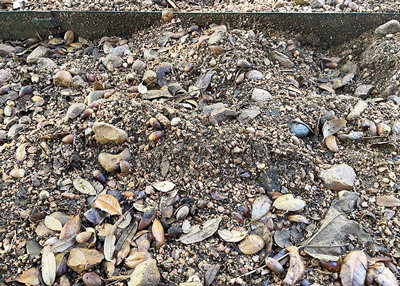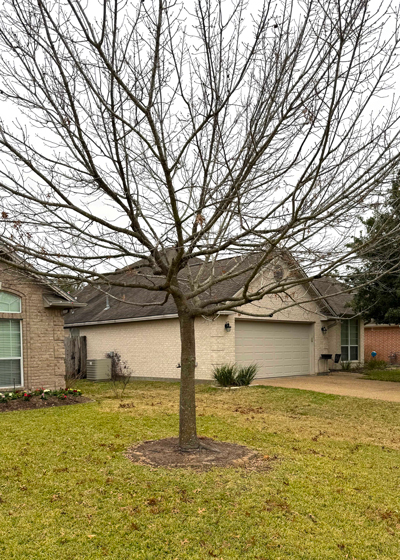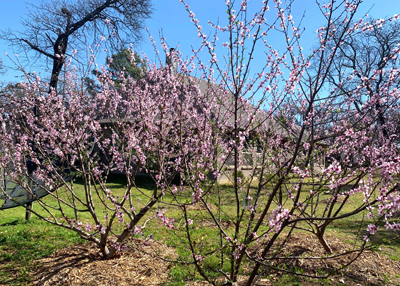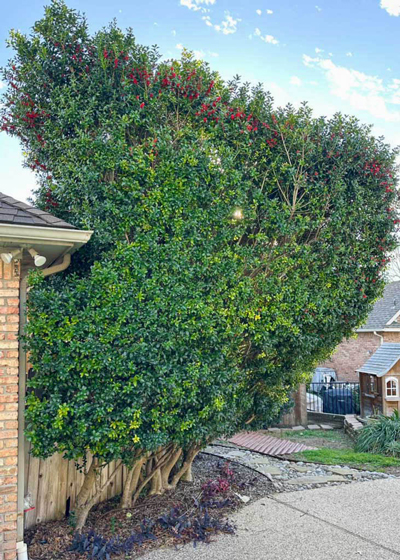Q&A – Ask Neil: January 11, 2024
(Please read these instructions carefully.)
Before you post your question, please look at recent issues to see if someone else has already asked it. You might find your answer there.
How to submit your question…
(Note: You may need to allow a pop-up window to come up in order to get the link for sending your photo(s). If you have already submitted your question and didn’t see the pop-up window, please click here.)
• Click the link provided below to post your question. After you submit your question, a new window will pop up giving you the address to which you can e-mail a SHARP, HIGH-RESOLUTION PHOTO to accompany your question. Please DO NOT SEND THUMBNAIL PHOTOS in case I need to zoom in to see things.
• Click here to post your question.
• Please ONLY POST YOUR QUESTION ONE TIME. We can only accept a set number of questions each week, and when we get duplicates it costs other people their chances.
• One question per reader, please.
• Please use this only for posting questions – not for standard emails.
• Watch for your answer in the following week’s e-gardens.
• I choose those of greatest general interest. For example, plant IDs seldom make the cut.
• I must have your first name or initials.
• I must have your city or county. (Texas is a very large state.)
QUESTION 1
WHAT CAN BE DONE TO STOP SKUNKS FROM DIGGING IN DECOMPOSED GRANITE?
Question: I see 2-3 skunks nightly digging up walkways of crushed granite in our unfenced front yard, excavating and digging deeply into the soil, even river rock. A local nursery said it is too cold for them to be hunting grubs, and acorns on top of the ground would not require that they dig. How can I repel them? Companies charge $300-$350 per skunk to trap and remove them (I know we have at least 3). We are not allowed to (and do not want to) shoot them, and our city discourages removing them, saying that another wild animal will just take their place. What can we do to make this area less attractive to them? They have left the lawn alone so far, but they have “rototilled” a walk that is 3ft. x 100ft. in size.

Answer: You really need to be working with a wildlife management specialist through Texas A&M. The folks in the Bexar County Extension office will be more than able to help you reach the best specialist in Texas, whether it’s someone in Bexar County or in College Station. Help is available from a person who deals with this type of challenge full time.
I’m a horticulturist who also has a skunk. But I’m no pro. My “friend,” however, sees fit to exist beneath my 7 large bird feeders in our wooded rural backyard. It seems to come and go. Zeus our friendly dog did a dance with it a couple of months ago, and then we’ve not seen it again since. Then we got a whiff while Zeus was roaming the woods as I let him out of the garage late one evening last week.
Skunks eat insects and roots. You’re right about the grubs being one of their favorite foods, but soil temperature and grub activity won’t matter to the skunks. They’ll still be in the soil at this time of year. However, I don’t know that grubs are going to be present in a walkway area because there are no plant roots there to serve as food sources for the grubs.
Skunks are known carriers of rabies. It does not kill them quickly, so they can transmit it for a long period of time. That’s a good reason not to want to have them around. That’s why I find it surprising that your city would say they don’t recommend removing them. That really would seem to be the least expensive solution in the long run, but then again, I’m not an expert.
Relative to your walk, could you consider putting a roll of chicken wire or hardware cloth 1 inch below the surface of the decomposed granite as you rebuild the walk? That would discourage their digging. It would become rusty, which could become a safety hazard eventually, but perhaps it could help drive them away. Or switch to interlocking concrete pavers.
My brain is now officially overheating. This is an absolutely wonderful question, and I hope that I have given you some additional things to work on. Here are university links I have found for you that might also provide more insights. The good news is that skunk control doesn’t depend on climate or soil types, so this information works anywhere.
University of Maryland: https://extension.umd.edu/resource/skunks/
Penn State University: (This is a very thorough sheet.) https://extension.psu.edu/skunks-solutions-to-common-problems
Purdue University: (for both raccoons and skunks):
https://turf.purdue.edu/skunks-and-raccoons-causing-havoc/
National Pesticide Information Center:
http://npic.orst.edu/pest/wildyard.html#skunk
San Diego County California: (says that some county health departments will provide trappers to remove skunks in residential neighborhood areas. Texas cities ought to be doing that, too.) https://www.sandiegocounty.gov/content/dam/sdc/common_components/images/awm/Docs/PN_Skunks.pdf
And, from home base! Texas A&M AgriLife Extension: (I note at the bottom of this publication that it was written in San Antonio! BINGO!)
https://agrilife.org/txwildlifeservices/files/2016/08/Skunks.pdf
QUESTION 2
WHEN IS THE BEST TIME TO PRUNE ELM TREES?
Question: I have both a cedar elm and an American elm. When is the best time of year to trim them? Annie S., Denton.
Answer: Certified arborists prune elms 12 months a year, perhaps laying off just a bit in early spring as they are budding out and new, soft growth is being produced. But even then it can be done. I prefer to have my trees pruned in the winter. The crews are more available then, plus we can see through the trees’ canopies while they’re bare so I can get a better idea of which branches really need to come off.
Just to have said it, the one notable exception with timing of pruning is with oaks. It’s always best to do all pruning of oaks between July 15 and February 15 (late summer, fall and winter). The oak wilt fungus is active in spring, and it is spread through open wounds in the trunk and limbs. So, pruning must not be done in the spring and early summer except in emergencies. All cuts made to oaks should be treated with pruning sealant. That is not necessary with your elms or other species.
QUESTION 3
WHAT SHOULD I DO AROUND THE TRUNK OF MY RED OAK?
Question: What should I do around the trunk of my red oak? The bricks and mulch looked great when smaller, but now roots are pushing the bricks around. Is it time to plant groundcover, or should I remove the bricks and re-mulch? Chris P., College Station.


Answer: Your tree is happy. I can see that the grass, however, is starting to thin out up close to the trunk. That thinning is going to expand as the tree and its shadow pattern grow larger. Yes, you are (or soon will be) a candidate for a shade-tolerant groundcover. I grew up in College Station. Suitable groundcovers in shade would include mondograss, liriope, Asian jasmine, purple wintercreeper euonymus, and English ivy. I prefer regular mondograss because I can easily blow leaves out of it. It has no runners to snag them. It would grow tall enough to conceal that large root that is beginning to expand out of the soil, not because of erosion, but just because of its own growth.
QUESTION 4
WHEN IS THE BEST TIME TO PRUNE PEACH TREES?
Question: My father from Eastern Europe told me that peaches need to be pruned last in the garden so that late freezes won’t get them after they have been pruned. I’ve attached photos of my peach trees from last spring. They were properly pruned and they were blooming at the end of February here in Keller. Andrew R.

Answer: I don’t want to argue with anyone from Eastern Europe where they’ve been growing peaches longer than we’ve been a country. However, late February in Tarrant County would be too late to prune peaches most years. Granted you might have a fluke of a spring with a late hard freeze if you pruned earlier, but you have a much greater chance of having your trees quickly come into bud on a warm winter week if you waited too long. That happens almost every year. It also depends on the chilling requirements of the varieties you are growing. I would say February 1-15 for Keller. I notice from your photo that your trees branch very close to the ground. If you ever plant more peaches try to develop your three main “scaffold” branches 22-24 inches off the ground. Also, remove all strongly vertical shoots each winter.
QUESTION 5
HOW MUCH CAN HOLLIES BE PRUNED?
Question: I have a screen of hollies that are overgrown in our backyard. They have branched out over a path that now can’t be walked on. How much can I cut back without harming it? I need it to fill in and not be an eyesore. Eric C., Plano.

Answer: You have your work cut out for you. You mention a garden path. The pavement at the bottom of the photo looks like a driveway, so I’m going to assume the path extends around the corner of the fence??? If that’s the case, that adds to the workload.
I make no guarantee that you can accomplish all this successfully. It would have been better if the plants had been trained a little bit all along. However, we’re going to pick it up where we are.
These would be my steps…
1. I know we don’t want those branches that extend way out over the walk, so I take my long-handled pole chain saw and cut them off somewhere above the edges of the bed or just slightly outside it. Warning: that is going to open up a huge batch of bare stubble. The plants will be very unsightly. Don’t give up yet.
2. Next, I would use the same saw to cut the plants to the desired height, probably at the gutter line. More stubble at the tops of the plants. There will be very little green foliage left.
3. Then I would put the power equipment away and use my loppers to clean each plant up with loppers. I would remove all dead and weak twigs and branches. I would remove all branches that rub or are growing where I don’t want them.
4. The sum total would be that 80 or 85 percent of the top growth will have been removed by the time you have finished. However, you’ll have the structural framework of plants that can resprout and fill back in. These plants appear to have grown uniformly (as judged by their trunk sizes), so I’m going to guess they will all have enough vigor to fill back in come spring. Apply an all-nitrogen fertilizer to them in mid-March and water them deeply.
5. If, by May you’re not satisfied with the way they’re starting to fill in you can pull the stumps and replace the plants with a more upright type of holly. The variety ‘Oakland’ would be a nice option. But I’d give this pruning a try first. I’ve done it to some of my own hollies with good results. Good luck!
QUESTION 6
WHAT CAN I USE TO REPLACE A ROW OF LIVE OAKS?
Question: Sadly, I have lost a row of live oaks to oak wilt. I need to replace them with a species that is not susceptible to that disease. I have ample room for a large tree, but I live on an escarpment where the soil is only 2 ft. deep, then limestone. What would you suggest? Jenny C., Belton.
Answer: It’s sad when we must take oaks out of our list of tree candidates. My standard list of the best large shade trees for most of Texas includes live oak, Shumard red oak, Chinquapin oak, bur oak, pecan, cedar elm, and Chinese pistachio. Southern magnolias are great in neutral or acidic soils, although they’re slower growing than the others. Eastern redcedar is excellent for an evergreen species.
From my own list I’m going to rule out the oaks, pecans (not enough soil), and magnolias (slow and need for a different soil). Depending on the setting and visual needs, I could see clusters of eastern redcedars irregularly spaced flanking a long drive in a naturalistic way. If you need a more formal row of trees, you could use cedar elms. Chinese pistachios would be good, although they do vary a little bit in their mature size when soils aren’t exactly to their liking.
You didn’t give me any idea of how you intend to use these, but as I hinted, if they’re to flank a long rural drive, I could see the redcedars in clusters of 3, 5 or 7 trees spaced 18 to 25 feet apart in clusters that are spaced even farther apart. Then I could see tree-form crape myrtles lining the drive as the unifying factor. I admit to being a huge fan of both of those plants, so I have quite a bias. I would use just one variety of crape myrtle for consistency. Purples are stunning. The variety Catawba would be my choice, but many people are fond of reds and other colors. (But if you use crape myrtles you have to promise me not ever to top them!)
QUESTION 7
HOW SHOULD I PRUNE MY PEACH TREE?
Question: I planted my peach tree three years ago. I didn’t know the special way to prune them until last spring. Looking at my photo, please tell me which branches I should trim. Danny S., Arlington.

Answer: Your overall goal is to develop a peach tree shaped like a large cereal bowl. Remove all vertical shoots that extend above 8 to 10 ft. Encourage branching growth that spreads to 15 or 16 ft. You can see that you tree is well on its way to an upright habit.
The bottom three branches just above the burlap should be removed flush with the trunk. So should the small twigs up to the three branches that come out at the same level. Those branches should be saved and trained to be the scaffold branches. However, each of those three will need to be cut back dramatically just above a bud facing out from the trunk.
Once you’re finished you will have removed 85 percent of the top growth of your tree and more than half of its height. Do this pruning in late January or early February where you are.
